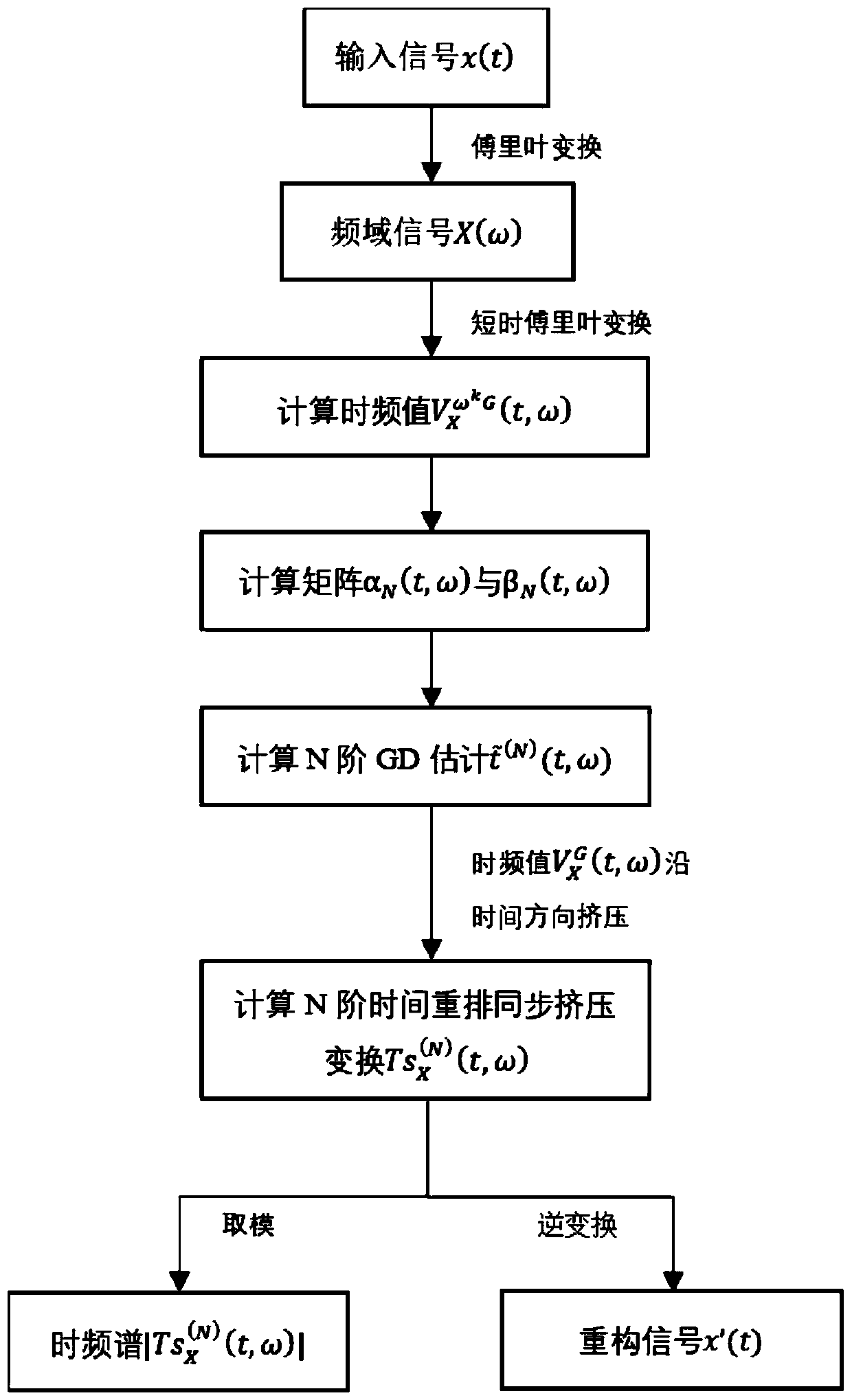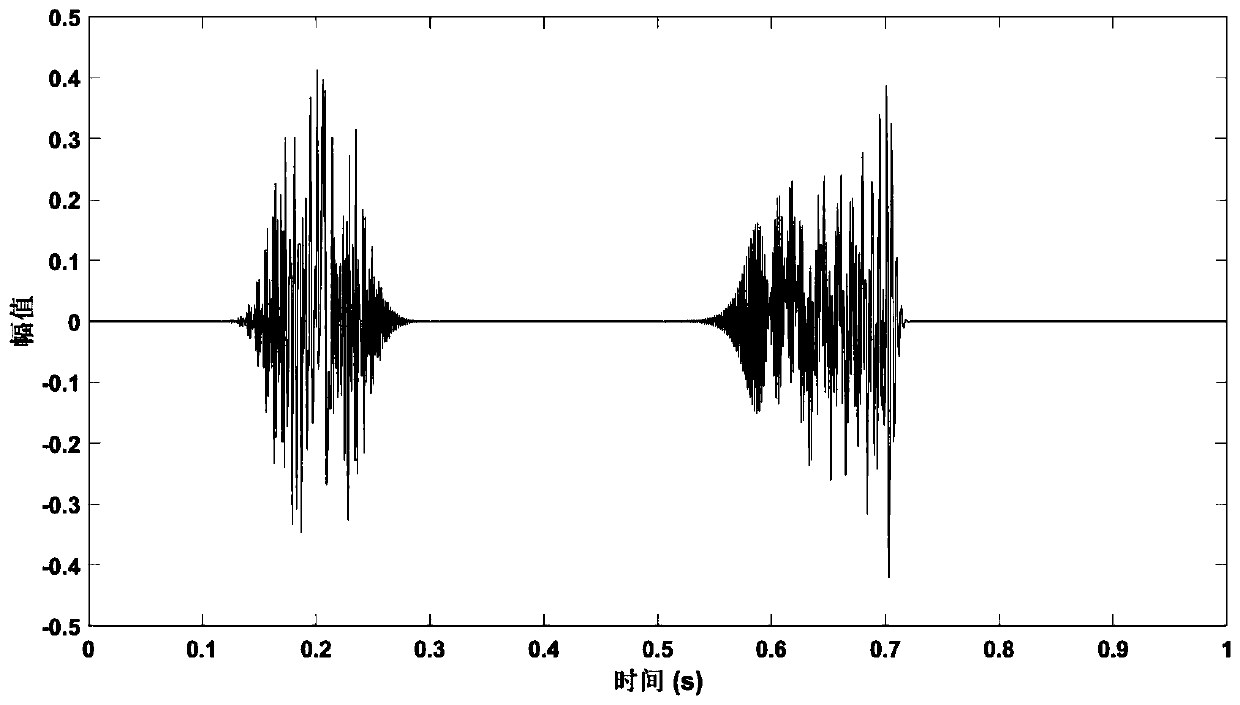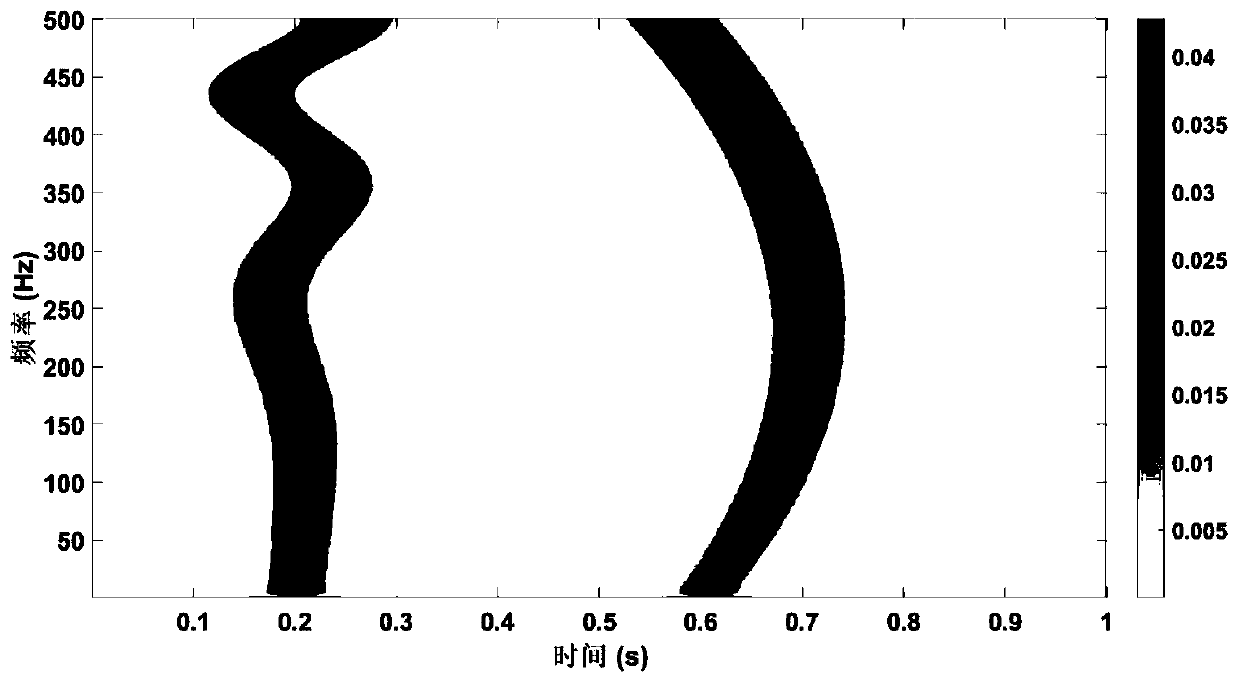High-precision high-order time rearrangement synchronous extrusion transformation time-frequency analysis method
A technology of synchronous extrusion and time-frequency analysis, which is applied in the field of signal processing, can solve problems affecting signal processing effects and limited GD estimation accuracy, and achieve the effects of improving time-frequency readability, suppressing energy divergence, and good consistency
- Summary
- Abstract
- Description
- Claims
- Application Information
AI Technical Summary
Problems solved by technology
Method used
Image
Examples
Embodiment 1
[0049] Example 1: see figure 1 , a high-precision high-order time rearrangement synchronous squeeze transform time-frequency analysis method, comprising the following steps:
[0050] (1) Obtain a time-domain signal x(t), perform Fourier transform to obtain a frequency-domain signal X(ω), t is time, and ω is frequency;
[0051] (2) Select order N and frequency window function G(ω), calculate X(ω) at ω k Short-time Fourier transform under G(ω) to obtain different time-frequency values corresponding to time-frequency points (t,ω) Where N is a positive integer, k=0,1,2,...,max{1,2N-2}, and when k=0, G(ω)=ω 0 G(ω), use Construct N order square matrix α N (t,ω) and β N (t,ω);
[0052]
[0053]
[0054] In the formula, s is the adjustment factor in the window function G(ω);
[0055] (3) Using the N-order square matrix α N (t,ω) and β N (t,ω) to calculate the Nth order group delay estimate
[0056] When β N When the determinant value of (t,ω) is not zero, th...
Embodiment 2
[0060] Embodiment 2: It also includes step (6), obtaining the reconstructed signal x'(t) through N-order time rearrangement and synchronous squeezing inverse transformation. All the other are identical with embodiment 1.
Embodiment 3
[0061] Embodiment 3: This embodiment is the same as Embodiment 2, the difference is that in step (2), Obtained by the following formula;
[0062]
[0063]
[0064] In the formula, v is a frequency variable and is independent of the value of ω, i is the imaginary number unit, G * (ω) represents taking the complex conjugate of G(ω).
[0065] In step (3), the N-order group delay estimation is specifically calculated using the following formula
[0066]
[0067] In the formula, Im means to take the imaginary part of the complex number.
[0068] In step (4), specifically use the following formula to obtain the N-order time rearrangement synchronous extrusion transformation
[0069]
[0070] In the formula, u is a time variable, and it is a different time variable that has nothing to do with the value of t, and the function σ(x) is a Dirac function.
[0071] In step (6), specifically adopt the following formula to obtain the reconstructed signal x'(t);
[0072]...
PUM
 Login to View More
Login to View More Abstract
Description
Claims
Application Information
 Login to View More
Login to View More - R&D
- Intellectual Property
- Life Sciences
- Materials
- Tech Scout
- Unparalleled Data Quality
- Higher Quality Content
- 60% Fewer Hallucinations
Browse by: Latest US Patents, China's latest patents, Technical Efficacy Thesaurus, Application Domain, Technology Topic, Popular Technical Reports.
© 2025 PatSnap. All rights reserved.Legal|Privacy policy|Modern Slavery Act Transparency Statement|Sitemap|About US| Contact US: help@patsnap.com



